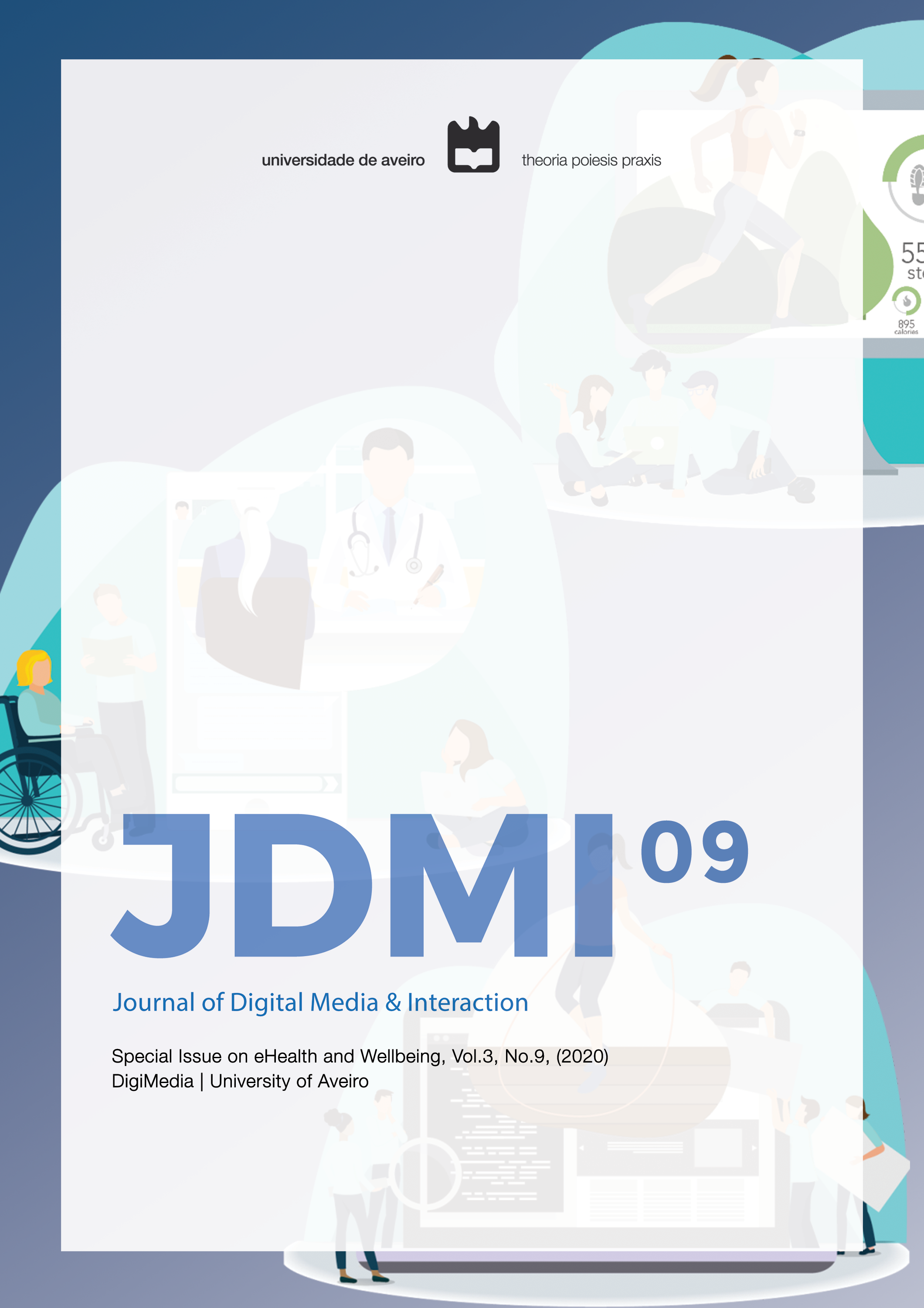Avaliação de Aplicações para a Qualificação e Empregabilidade de Pessoas com Deficiência
(Evaluation of Applications for the Qualification and Employability of People with Disabilities)
Abstract
Com o propósito de reduzir o preconceito, mudar os índices existentes e destacar as habilidades das pessoas com deficiência, este artigo apresenta uma avaliação de ferramentas existentes no mercado, que proveem treinamentos especializados e conexão de pessoas com empresas. A avaliação foi feita sob a perspectiva das heurísticas de usabilidade e das diretrizes internacionais de acessibilidade, para, a partir dos pontos de melhoria encontrados, apresentar uma solução digital que promova a qualificação e a empregabilidade de pessoas com deficiência, baseada em processos de correspondência mútua, nos quais as habilidades comportamentais e técnicas são igualmente importantes.
(In order to reduce prejudice, change the existing indices and highlight the skills of people with disabilities, this article presents an assessment of tools available in the market, which provide specialized training and connection of people with companies. The assessment was conductedfrom the perspective of usability heuristics and the international accessibility guidelines, so that, based on the points of improvement found, to present a digital solution that promotes the qualification and employability of people with disabilities, based on mutual correspondence processes, in which behavioral and technical skills are equally important.)
Downloads
References
ABRH. (2016). ABRH Brasil. Disponível em https://www.abrhbrasil.org.br/cms/wp-content/uploads/2016/09/Pesquisa-i.Social-2016.pdf. Acesso em 14 de Fevereiro de 2019.
Agenda 2030. (Setembro de 2015). (ONU) -Plataforma Agenda 2030. Disponível em http://www.agenda2030.org.br/ods/4/. Acesso em 14 de Fevereiro de 2020.
Almeida, A; Santos, P; Machado, M; Chalegre, V. HiLives: a digital tool to connect and network opportunities for independent lives in Higher Education. Poster. 51th EUCEN Conference. Aveiro. 2019. Disponível em http://eucen2019.web.ua.pt/wpcontent/uploads/2019/06/2-Aveiro19_PISCO-ALMEIDA_strand1_poster.pdf. Acesso em 17 de Fevereiro de 2020.Be My Eyes. (2020)
Be My Eyes, disponível em https://www.bemyeyes.com/. Acesso em 05 de Fevereiro de 2020
Botelho, F. Passarelli, B. Mealha, Oscar. (2019). Interatividade e literacias emergentes em contextos de inclusão digital: um estudo netnográfico no programa AcessaSP. Journal of Media & Digital Interaction. Vol 2 No 4. DOI: https://doi.org/10.34624/jdmi.v2i4.2746
Coursera. (2020). Coursera.Disponível em https://www.coursera.org/. Acesso em 08 de Julho de 2020
Ferreira, S., & Nunes, R. (2008). e-Usabilidade. Rio de Janeiro: LTC.
Google Play. Google; Disponívelem https://play.google.com/store/apps/details?id=com.google.android.apps.accessibility.auditor&hl=pt. Acessoem 20 de Janeiro de 2019.InfoJobs. (2020).
InfoJobs.Disponível em https://www.infojobs.com.br/. Acesso em 10 de Julho de 2020.
ISO. (2018). ISO 9241-11:2018(en) Ergonomics of human-system interaction —Part 11: Usability: Definitions and concepts Disponível em https://www.iso.org/obp/ui/#iso:std:iso:9241:-11:ed-2:v1:en. Acesso em 20 de Julho de 2020.
Ito, M. (2017). Mimi ito -Weblog: What a Minecraft Server for Kids with Autism Teaches Us About Haters and Allies.Disponível em http://www.itofisher.com/mito/weblog/2017/11/what_a_minecraft_server_for_ki.html. Acesso em 03 de Março de 2020.
Lazar, J., Olalere, A. & Wentz, B. (2012) Investigating the Accessibilityand Usability of Job Application Web Sites for Blind Users. Journal of Usability Studies. Vol. 7, Issue 2, February 2012, pp. 68-87.
LBI. (2015). Lei Brasileira de Inclusão da Pessoa com Deficiência. Disponível em http://www.planalto.gov.br/ccivil_03/_Ato2015-2018/2015/Lei/L13146.htm. Acesso em 17 de Fevereiro de 2019.
Marston, W (2016). As Emoções das Pessoas Normais. São Paulo.Success for You
Nielsen, J., & Mack, R. (1994). Usability Inspection Methods. New York: Wiley.
ONU. (2008). Secretaria Especial dos Direitos da Pessoa com Deficiência. Disponível em https://www.pessoacomdeficiencia.gov.br/app/publicacoes/convencao-sobre-os-direitos-das-pessoas-com-deficiencia. Acesso em 14 de Fevereiro de 2019.
Research on Disability. (2014). Research on Disability.Disponível em https://researchondisability.org/news-features/2014/10/03/ntide-jobs-report-despite-economic-milestones-employment-gap-remains-for-people-with-disabilities. Acesso em 07 de Fevereiro de 2019.
Rocha T., Goncalves M., Godinho F., MagalhaesL.& Bessa M.(2009) Accessibility and usability in the internet for people with intellectual disabilities. Proceedings of 2nd International Conference on Software Development for Enhancing Accessibility and Fighting Info-exclusion-DSAI’2009, 25–29.
Sonza, A. (2008). Ambientes virtuais acessíveis sob a perspectiva de usuários com limitação visual.http://hdl.handle.net/10183/14661. Porto Alegre.
Trenton , S., Kristin , F. S., Henrik , A., & Marc , B. (2014). A Case Study for Universal Design in the Internet of Things. Conference: Universal Design. Lund -Suécia.DOI: 10.3233/978-1-61499-403-9-45.
W3C. (05 de Junho de 2018). Web Content Accessibility Guidelines (WCAG) 2.1. Disponível em https://www.w3.org/TR/WCAG21/. Acesso em 02 de Julho de 2020.
Authors who publish in the JDMI agree to the following terms:
-
Authors retain copyright and grant the journal the right of first publication with the work simultaneously licensed under a Creative Commons BY-NC-ND 4.0. This licensing allows others to share the work with no changes and acknowledgement of the work's authorship and initial publication in this journal, but not for commercial use.
-
Authors are able to enter into separate, additional contractual arrangements for the non-exclusive distribution of the journal's published version of the work (e.g., post it to an institutional repository or publish it in a book), with an acknowledgement of its initial publication in this journal.
-
Authors are permitted and encouraged to post their work online (e.g., in institutional repositories or on their website) after publication, as it can lead to productive exchanges, as well as earlier and greater citation of published work.
Copyrights to illustrations published in the journal remain with their current copyright holders.
It is the author's responsibility to obtain permission to quote from copyright sources.
Any fees required to obtain illustrations or to secure copyright permissions are the responsibility of authors.
Additional Information
All correspondence concerning contributions, books and other review material should be sent to: deca-jdmi@ua.pt


